

Hilde Sørstrøm
In this conversation with artist Aslaug Juliussen, Hilde Sørstrøm delves into Juliussen's sustainable approach to material transformation. While her installations and sculptures are made using materials and technique from her Sámi heritage, Juliussen always seek to evolve and transform the materials into something new.
Aslaug Magdalena Juliussen (b. 1953) studied at the National College of Art and Design in Oslo (Statens Håndverks- og kunstindustriskole, SHKS), but has lived most of her life in Northern Norway. She lived for 20 years in Karasjok, where, along with artistic practice and teaching duodji1, she was involved in reindeer husbandry. In Juliussen’s sculptures and installations, we can clearly recognise her interest in Sámi culture, reindeer herding, hunting and outdoor life. The materials she chooses to use in her art are often remains from the slaughter of reindeer: antlers, bones, hair/fur, stomach and other animal materials. In her treatment of these materials, she blazes her own trail, as it were, by combining duodji knowledge with textile techniques and other methods she has learned, studied and experienced. Juliussen’s personal approach results in tactile works of art that appeal to far more senses than sight. But when she insists on using waste products from slaughter and on transforming them into art, she also points out other contexts.
‘Being close to animals, also the interaction between animals and people, are significant aspects. People have always harvested from nature’s excess. Sustainable development and exploration based on nature’s own premises are becoming increasingly important. And this is also very important to me’, says Aslaug M. Juliussen.
Today, the artist’s ecological involvement comes to expression in a number of amazing sculptures and installations that have required a seemingly magical ability to turn unassuming gravel into gold. Take for example OvdagiehtaKuvlla / Forehand Sphere (2005), which is a sphere consisting of antlers and green-coloured reindeer hair, or Multiple Stiches – Sight in Sewing IV (2017), which presents a tail of reindeer bones combined with horsehair that extends out from a wavy, bright blue, laminated and embroidered textile.

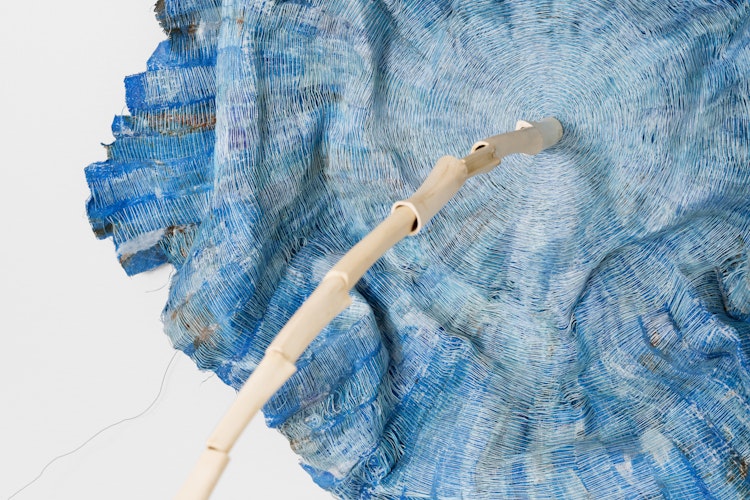
From North to South and back again
Even though Juliussen only lived in Lødingen until she was 16, her childhood in this small community in Northern Norway has been very significant for her. Hunting, fishing, the use of resources, knowledge of nature and the history and culture of the North and of the Sámi people – especially the value placed on working with one’s hands – were all important. In her childhood she also had feminine role models, as her grandmother and mother inspired her with their knowledge of how to use available resources.
In 1976 Juliussen moved from Northern Norway to Oslo to study at SHKS. After completing her education in 1980, she had the opportunity to work as an assistant to the well-known Norwegian textile artist Synnøve Anker Aurdal (1908–2000). This was a highly coveted job with many applicants. Juliussen’s experiences from childhood and youth had a lot to do with why she was offered the job.
‘When I was hired by Synnøve, I thought “My goodness, me?!” And after I had worked with her for a while, I asked her why she had chosen me as her assistant. She replied: “Girls from small villages in Northern Norway. They can do everything.” Today, of course, I can also see the value of such an upbringing.’
Juliussen assisted Aurdal for two years. She then made a non-traditional career choice: she moved back above the Arctic Circle. She first moved to Tromsø, then to Kautokeino, and then spent approximately 20 years working as an artist in Karasjok. Today she is back in Tromsø and is pleased to see that the wider world is acknowledging the production of art above the Arctic Circle. This has not always been the case. Juliussen well remembers people’s comments when she chose to return to Northern Norway in 1982.
‘“Travel north? Then you don’t take your career seriously.” That was the attitude back then. It meant I had to blaze a new trail. If I had stayed in Oslo, I certainly wouldn’t be working in the way I do today. So it’s great to see that people now think what I do today is interesting.’
What do you think about your relation to Western art history and the fact that you chose to look in a different direction?
‘In my younger years, there was no art school in Northern Norway. One had to apply to schools in Southern Norway. What I retained from my time at art school are the tools of learning theory and techniques. Since my student days, Arctic history and cultural history have always been springboards for in-depth study. Using textiles as a ‘hub’, I developed my artistic practice over time. Meeting Synnøve Anker Aurdal gave me courage to do in-depth studies of the cultural history of the North. Synnøve had grown up in Lillehammer, where Maihaugen Museum was the cultural power centre. She showed how she re-translated tradition, pointed out new directions and found a source for new narratives. This inspired me. But I was also always asking myself: “Which textile traditions do we have in the North?” For my art history project at SHKS, I therefore wrote about grene weaving2, and I went to Kåfjord in the district of Nord-Troms to learn how to weave grener.’
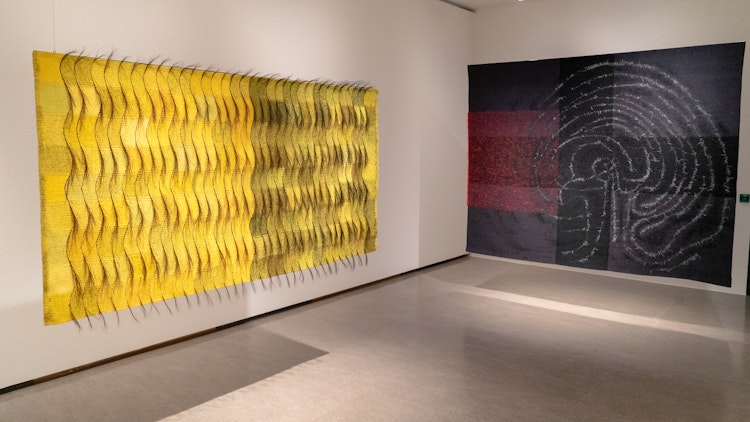
Exploring and enstranging
Exploring textile techniques has been central to Juliussen’s artistic practice since the start of her career. In addition to Sea Sámi grene weaving – which is found, for instance, in the Mandalsgrena – she has also explored many other techniques. We can mention her thorough studies of båtryer3 and duodji techniques from everyday life in Finnmark, for example, tanning, skallesøm4, ribbon weaving, and so on.
‘Båtryer were very important and valuable functional textiles in Northern Norway. An aesthetically beautiful textile with a function. But of course, many people didn’t recognise the aesthetic value of it in the past. They only saw the cultural-historical value. When I moved to Kautokeino and Karasjok in Finnmark, I learned quite a few Sámi crafts and duodji techniques.’
Even though Juliussen has been interested in traditional techniques from above the Arctic Circle, there is little that looks traditional in what she makes today. In Hornild / Antler Fire (2006), reindeer hair and antlers form a large and bright pink sphere, and in the series Multiple Stitches – Sight in Absence (2016–2017), she juxtaposes horsehair-floss with laminated textiles, embroidery, fishhooks and metal wire. But what does she herself think about her approach to such materials?
I explore, experiment and transform. In encountering a material, I often hold in mind that I want to see with renewed vision. I want it to be like I’ve never seen the material before. The gaze, that’s the start. And it’s a very important starting point.
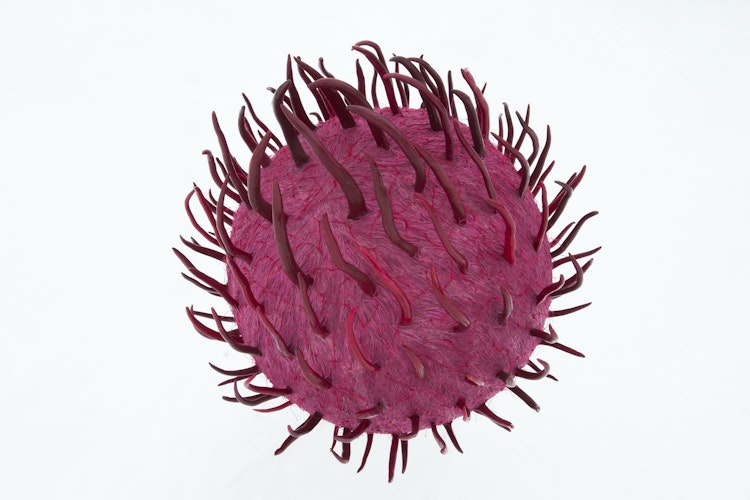
Have you always had this starting point?
‘It was perhaps less deliberate in the past. I’ve become increasingly aware of it. Now I think a lot about it in relation to Russian Formalism and Russian literary theory from the 1920s. For example, the practice of making a well-known word unfamiliar. You can also enstrange a well-known material. It becomes a kind of brainwashing: you take one step to the side and look at the material again from that new position.’
The kind of defamiliarization Juliussen refers to here can be related to a theory developed by Viktor Sjklovskij (1893–1984), a Russian author and theorist of literature and film who is also considered to be one of the founders of Russian Formalism. Sjklovskij argued that artists – with their artistic devices and strategies – have the ability to convey a new perception of reality. When Juliussen focuses her questioning eyes on the materials she has gleaned from reindeer slaughter, we can interpret her activity as a way of communicating an alternative picture, not just of the remains of a slaughter, but also of the relation between animals and people.
In the formal expression resulting from Juliussen’s processes, there is one recurring characteristic. It is a feeling of some kind of disquiet. Juliussen admits that to include this uncanniness is important for her. But why?
‘I sometimes call it a jarring quality. When I work with it myself, it’s of course not unpleasant for me. But I think it has to do with sensory perception. It comes from sensing the materials. And the unpleasantness is what makes the work tactile and sensorial.’
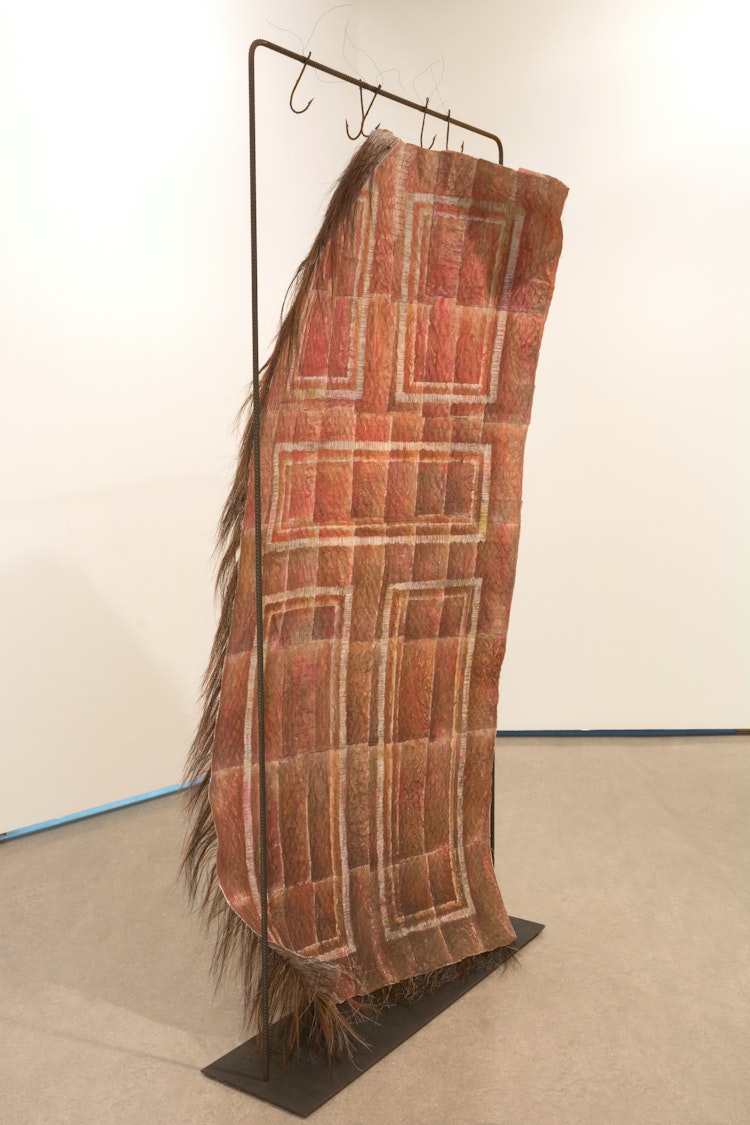
Vegetable and animal materials
The artist has been interested in material qualities for a long time, but it was not until she moved to Karasjok that she truly saw the value in animal and vegetable materials.
‘When I established myself in Karasjok, along with my family, and got involved in reindeer husbandry, the place where the animals were slaughtered really gave me a kick. It was then that I started seeing all the beauty. You have time to sort through what you can use for food and what you can use to make clothing. It’s resource utilisation. But to attribute a pictorial quality to these materials, to see them with renewed vision, like I try to do, that was maybe a bit strange. People of course had used the reindeer stomach in food preparation, but no one had brought it into the art gallery.’
The first time Juliussen presented art that included remains from the slaughtering process was in an exhibition at the Sámi Centre for Contemporary Art (Sámi Dáiddaguovddáš) in Karasjok, in 1999. One installation included reindeer stomachs that were turned inside-out.
‘Many adults turned up their noses, but 15-year-old boys who had traipsed through these materials in the mountains thought it was cool. They saw something they hadn’t seen before.’
Not everyone recognises the use of resources in her works. Over the years the artist has gotten many comments from people who feel the remains of slaughter can be unpleasant to experience in works of art.
‘In these cases, I stress the ethical dimension in it. NO animal has died in the process of creating the work. I need to remind people of this, because the idea seems almost absent. It’s a matter of using resources, pure and simple.’
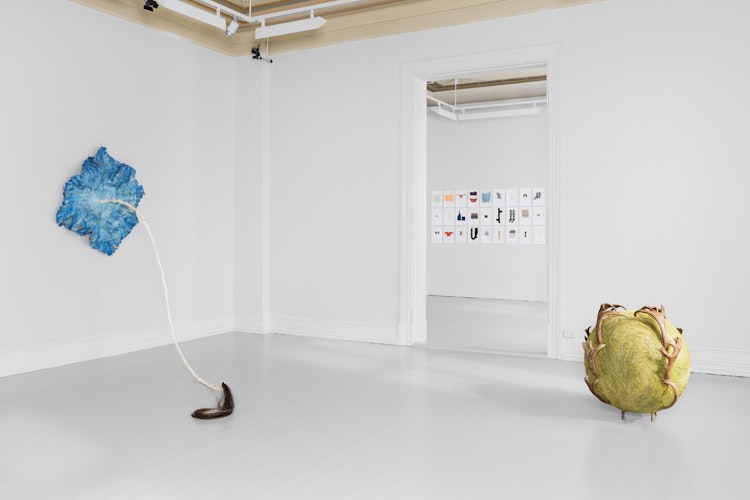
Nature and culture
Along with Juliussen’s many informants in the field of reindeer husbandry, one person in particular has been highly significant for her avid interest in resource utilisation: the veterinarian, environmental activist and author Bergljot Børresen.
‘She’s now an older lady, but she used to be very active. I would say she was one of Norway’s foremost experts on animals and their behaviour. Early on, she took care not to eat the meat of animals who did not have good living conditions. And she knows an amazing amount about animal husbandry, so I’ve read everything she has published.’
Do you think a lot about nature and culture when you work? That there’s a connection there?
‘I’m glad you mention this. I think a lot about it. For example, in relation to my grandmother in Lødingen, who has been quite unique in her ability to be self-sufficient. And when I moved to Finnmark, there was such a close proximity to reindeer and all the knowledge relating to them.’
‘It’s a matter of using resources, pure and simple.’
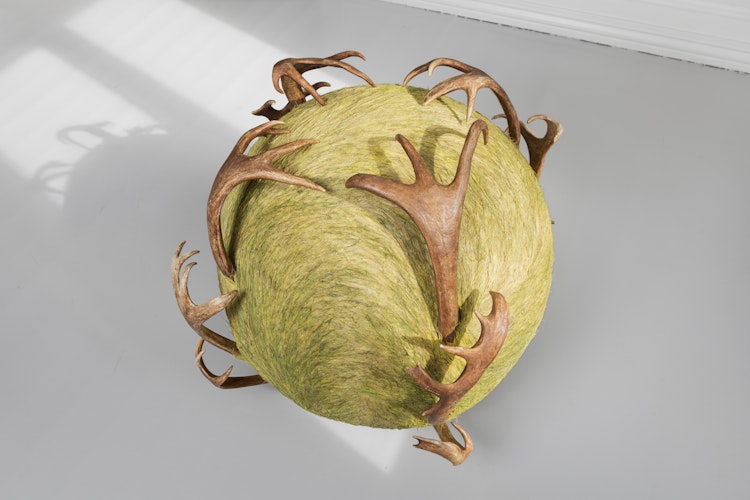
Juliussen’s thoughts about nature and culture are also informed by the writings of academics, for instance by the feminist, philosopher and biologist Donna Haraway, and the author, painter and art critic John Berger. One example of a text that has made a big impression on her is Berger’s essay Why Look at Animals (1977).
‘He writes about animals in an amazingly beautiful way. We like to say that what distinguishes humans from animals is our ability to create symbols and to use them in communication. But John Berger claims that our use of symbols arises from our relation to animals. Think of Palaeolithic cave paintings and signs of the zodiac. Animals figured in our first symbols, and according to Berger, what differentiates us from animals depends on our relation to them. The proximity to animals – and the act of linking nature and culture together and visualising the relation – that’s what I’m concerned about. It’s about binding together the past, the present and the future, people and nature, the modern and the traditional.’
Juliussen also emphasises that the artistic expression is very personal for her.
‘The materials can be linked to traditions and to different cultures, and I’m of course especially interested in Sámi culture. So, the starting point is important. But I hope I can also lay hold of something that is universally relevant.’